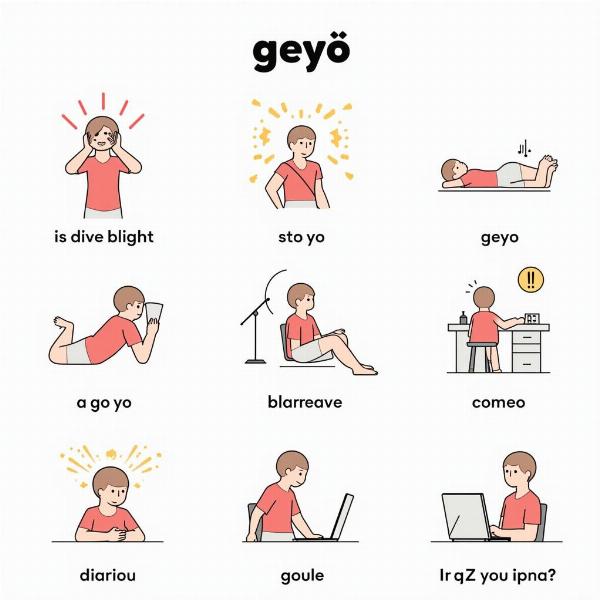Understanding the meaning of “geyā” (गया) in Hindi is crucial for anyone learning the language. While it primarily translates to “gone,” its usage extends beyond a simple past tense indicator. This article delves into the various nuances of “geyā,” exploring its grammatical function, common usage, and subtle contextual variations, helping you master this essential Hindi word.
Deconstructing “Geyā”: Grammatical Insights
“Geyā” is the masculine singular form of the past participle of the verb “jāna” (जाना), meaning “to go.” It’s crucial to understand its conjugation to apply it correctly. For feminine singular subjects, we use “gayī” (गयी), and for plural subjects, “ga.e” (गए) is employed. The word often acts as a helping verb, combining with the main verb to form the perfect tense. This tense signifies a completed action in the past.
Common Usages of “Geyā” in Everyday Hindi
The most straightforward use of “geyā” is to indicate someone or something has gone somewhere. For example, “woh bazaar geyā” (वह बाज़ार गया) translates to “He went to the market.” However, “geyā” also carries more nuanced meanings:
- Completion: “Khānā khā liyā geyā” (खाना खा लिया गया) translates to “The food has been eaten.” Here, “geyā” emphasizes the completion of the action.
- Passive Voice: “Kam kar liyā geyā” (काम कर लिया गया) means “The work has been done.” “Geyā” is used to construct the passive voice.
- Informal Speech: In casual conversation, “geyā” can be used to express a sense of finality or resignation. For example, “Paise gaye” (पैसे गए) might be exclaimed if someone loses money, meaning “The money is gone!”
Contextual Variations and Subtleties of “Geyā”
While “geyā” generally translates to “gone,” its precise meaning can shift slightly depending on the context. Consider these examples:
- “Woh geyā” (वह गया): This can simply mean “He went” or “He is gone.” The specific meaning becomes clear based on the surrounding conversation.
 Geyā Contextual Variations
Geyā Contextual Variations
- “Kam ho geyā” (काम हो गया): This translates to “The work is done/finished.” Here, “geyā” indicates completion.
“Geyā” in Different Tenses
It’s crucial to note that “geyā” is specifically used in the past perfect tense. Other tenses require different forms of “jāna.” For example, the simple past would use “gayā thā” (गया था) – “He had gone.”
Frequently Asked Questions about “Geyā”
- What is the feminine form of “geyā”? The feminine form is “gayī” (गयी).
- How do you use “geyā” in the plural? The plural form is “ga.e” (गए).
- Can “geyā” be used in the present tense? No, “geyā” is specifically a past tense form.
- What is the difference between “gayā” and “jā rahā hai”? “Gayā” refers to a completed action in the past, while “jā rahā hai” signifies an action in progress (present continuous).
- Is “geyā” always used to indicate physical movement? Not always. It can also indicate the completion of an action, as in “Khānā khā liyā geyā” (The food has been eaten).
- How do I use “geyā” in the passive voice? “Geyā” is combined with the past participle of the main verb to form the passive voice, e.g., “Kam kar liyā geyā” (The work has been done).
- What does “paise gaye” mean? “Paise gaye” (पैसे गए) is an informal expression indicating that money is lost or gone.
Meaning-Hindi.in is your one-stop solution for all your Hindi translation needs. We offer a wide range of services, from business and legal document translation to website localization and technical translation. Our team of expert linguists ensures accurate and culturally sensitive translations for every project. Contact us today for a free quote! Email: [email protected], Phone: +91 11-4502-7584. Meaning-Hindi.in is committed to delivering high-quality translations that bridge language barriers and foster effective communication.